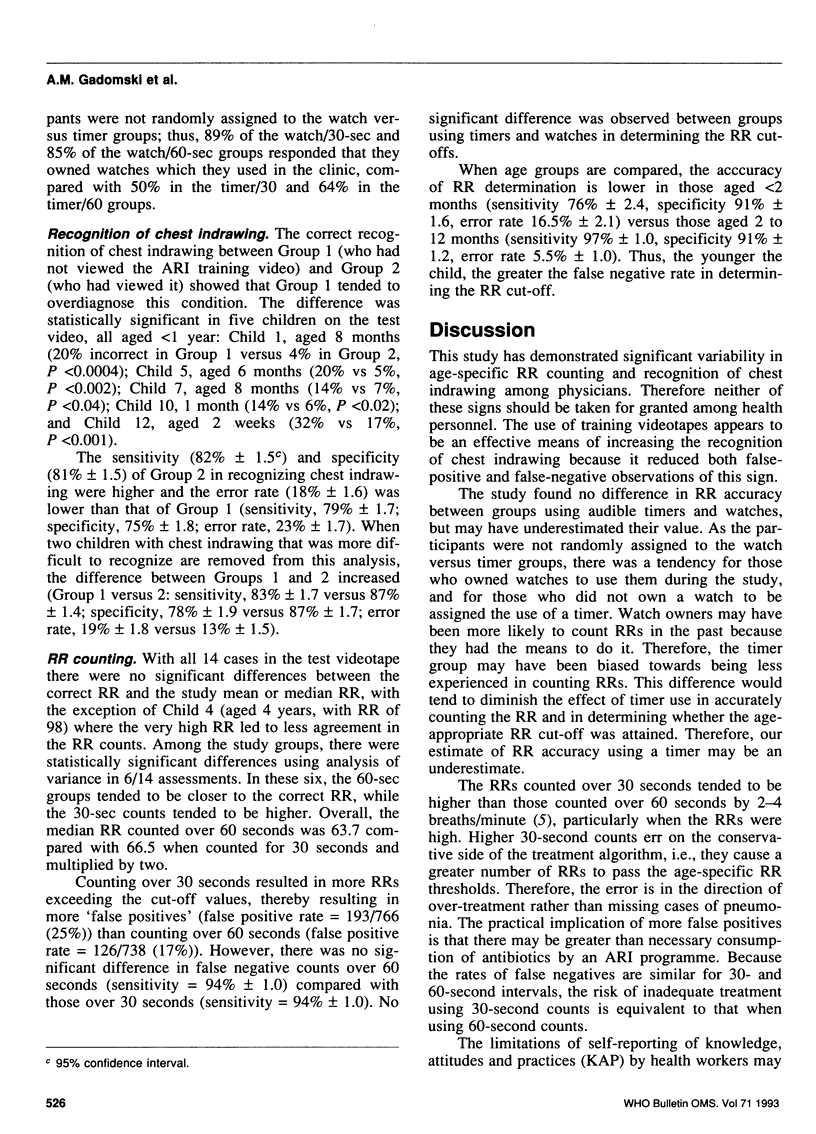Abstract
In a baseline study for training purposes, two indicators of acute respiratory infections (the respiratory rate (RR) and chest indrawing) were assessed by Ministry of Health physicians in Egypt using a WHO test videotape. Chest indrawing, as defined by the WHO Acute Respiratory Infections (ARI) programme, was not widely recognized by current health personnel. Viewing a WHO training videotape led to significantly more correct assessments of chest indrawing compared with a group that had not viewed this videotape. The accuracy of using a timer versus a watch, and a 30-second versus 60-second counting interval was also evaluated. Rates counted over 60 seconds were more accurate than 30-second counts although the difference between them was not clinically significant. Counting of rates using timers with audible cues was comparable to using watches with second hands. Careful training of primary health workers in the assessment of RR and chest indrawing is essential if these clinical findings are to be used as reliable indicators in pneumonia treatment algorithms.
Full text
PDF




Selected References
These references are in PubMed. This may not be the complete list of references from this article.
- Berman S., Simoes E. A., Lanata C. Respiratory rate and pneumonia in infancy. Arch Dis Child. 1991 Jan;66(1):81–84. doi: 10.1136/adc.66.1.81. [DOI] [PMC free article] [PubMed] [Google Scholar]
- Gravelyn T. R., Weg J. G. Respiratory rate as an indicator of acute respiratory dysfunction. JAMA. 1980 Sep 5;244(10):1123–1125. [PubMed] [Google Scholar]


